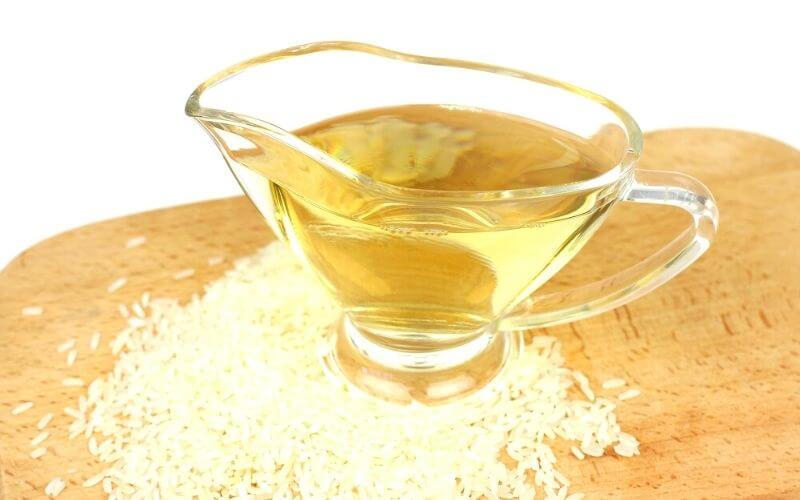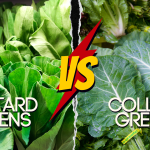Rice is the ultimate ingredient. Besides being a dietary staple in many cultures, you can turn rice into crispy chips, a smooth and creamy pudding, or delicately flavored vinegar.
Yup, that’s right. Rice can be used to make vinegar. In fact, rice vinegar has a pleasant sweetness, toned down tartness, and a great flavor profile. This makes it a popular condiment in many Asian dishes. It is used to season sushi rice, noodles, stir-fries, and dipping sauces.
But what is one to do when they don’t have or can’t find rice vinegar? Most people will go looking for a substitute for rice vinegar. And if you’re one of them, you’ve come to the right place!
In this article, you will find out all about all the things you can substitute for rice vinegar. Besides talking about each replacement for rice vinegar, I will also mention my favorite product, as well as the dishes you can and cannot substitute them in.
You may also like: Best way to freeze vinegar
A Quick Glance at Rice Vinegar

Rice vinegar is made from fermented rice. The sugars in rice are turned to alcohol aka rice wine. Bacteria are then used in a second fermentation which turns the rice wine into vinegar.
The result is a much milder vinegar which isn’t as sour as white vinegar or anything made from fermented grapes or malt. This makes it a delicious addition to salads, noodles, fried rice, and sauteed vegetables.
It has a much subtler flavor and melds into the background. Because of this, it pairs well with soy, sake, brown sugar, and fish sauce, making it the perfect condiment for Asian and Asian-fusion cuisine.
People often get confused between rice vinegar and rice wine vinegar. However, the two are the same thing.
But you need to know that there is a difference between rice wine and rice vinegar/rice vinegar. You can drink rice wine and it has a sweet flavor, but rice vinegar is too sour for even a sip!
Chinese rice vinegar is another variant that confuses people. These two can be interchanged, but Chinese rice vinegar is often black or red and has added aromatics and seasonings to further flavor the condiment.
Best Rice Vinegar Substitutes
The following are among the best substitutes available for rice vinegar. You might have to change the amounts mentioned in the recipe to get a similar flavor profile, but these will make for a reliable substitution for rice vinegar.
01. Apple Cider Vinegar:
[amazon box=”B07QD9BBL8″]If your recipe calls for rice vinegar, there’s a good chance that it wants a mild, almost fruity condiment with the right kind of tartness. This is why apple cider vinegar is the most common and ideal alternative to rice vinegar.
Both apple cider vinegar and rice vinegar have a subtle flavor that won’t clash too much with other seasonings and won’t overpower the dish. Moreover, ACV is easily available everywhere and is used in many other dishes, as well as consumed for health purposes.
Apple cider vinegar can also be used to condition hair and clarify the scalp, so a big bottle will see you through multiple uses. However, bear in mind that ACV has a fruity apple flavor, which can slightly alter the taste of your pickles or sushi rice.
For most other dishes, just use an equal amount of apple cider vinegar instead of rice vinegar.
Best for: Marinades, sauces, ramen, dressings
Not Recommended for: Pickling and seasoning sushi rice
Amazon Product Recommendations: Bragg Organic Apple Cider Vinegar and Marukan Organic Apple Cider Vinegar
02. White Wine Vinegar(not white vinegar)
[amazon box=”B0877BQ53X”]Since we’re looking for sweetness, the keywords in this substitution are ‘white wine’. Don’t use plain white vinegar instead-it will be way too tart. Instead, use white wine vinegar as it has a milder, sweeter flavor and isn’t nearly as pungent as white vinegar.
White wine vinegar is used a lot in Western cooking and is used primarily for flavoring and deglazing pans. When using it to replace rice vinegar, start by adding a small amount of white wine vinegar and add more as you go along, until you are satisfied with the flavor.
If you think the dish is missing some sweetness, add anywhere from a pinch to a quarter teaspoon of granulated sugar for every spoon of vinegar to balance out the acidity. If you must use white vinegar, use half or less than half the amount specified in the recipe.
Best for: Marinades, sauces, ramen, dressings, pan sauces, and sushi rice
Not Recommended for: Certain desserts
Amazon Product Recommendations: Solspring Biodynamic Organic White Wine Vinegar and Colavita Aged White Wine Vinegar
03. Lime/Lemon Juice:
[amazon box=”B07CT1DTHB,B089X2V5ZK”]Even if you don’t have fancy vinegar in your pantry, there’s a good chance you have a lime or lemon in the back of your fridge. Lime juice has a natural sweetness that balances out some of the sourness, making it a great seasoned rice vinegar substitute. However, adding a touch of sugar to lemon juice also does the trick.
The brightness of citrus juices makes it a great option for salad dressings, marinades, and a topping for noodle dishes like Pad Thai. However, bear in mind that lemons and limes have a certain zesty, floral note to them which you will not find in rice vinegar.
As citrus juices are pretty mild, you may need to double the amount when using them to replace rice vinegar. As always, taste and go whenever you can to make sure your dish ends up being perfect.
Best for: Desserts, marinades, sauces, dressings
Not Recommended for: Sushi rice, pan sauces
Amazon Product Recommendation: Iberia 32-Ounce Pure Lemon Juice and Lucy’s Family Owned Lime Juice
04. Champagne Vinegar:
[amazon box=”B0050ILDRG”]Besides apple cider vinegar, this may be the closest thing to rice vinegar in terms of flavor. This mild, floral, sweetish vinegar is made by fermenting Chardonnay. It has a very bright flavor profile, with a surprising amount of tang, but a light taste.
Because of its mild taste, cooking this vinegar for too long or at high temperatures can kill its flavor. So, it is best to use it for raw preparations like a vinaigrette or salad dressing. You can even use it to finish sauces, or drizzle over vegetables, or when making soy-stained boiled eggs.
At the same time, champagne vinegar is a good option for marinades and it tenderizes meat very well. When replacing rice vinegar with champagne vinegar, use the same amount as specified in the recipe.
Best for: Marinades, dipping sauces, dressings, vinaigrettes
Not Recommended for: Stews, soups, and slow-cooked dishes
Amazon Product Recommendation: Sparrow Lane Champagne Vinegar and Beaufor French Champagne-Ardenne Vinegar
05. Sherry Vinegar:
[amazon box=”B07FXYVXJJ”]Anyone used to cooking will know that sherry vinegar is always a good option to keep in the kitchen. In fact, it is even known as balsamic vinegar’s even better friend. And if you are looking for a brown rice vinegar substitute, sherry vinegar is a near-perfect replacement.
Sherry vinegar is generally sourced from Cadiz in Spain and is made by fermenting wine and then aging it. The more aged the vinegar, the darker it looks, and the more complex the flavors. Aged vinegar is also quite pricey.
But relatively younger sherry vinegar is much more complex than other wine vinegar. They have a crisp, tart, acidity, which is balanced out by sweeter, caramel notes. Instead of the more floral notes, you will find layers of nuttiness and understated fruity flavors.
Because of this, sherry vinegar works really well as a salad dressing, when added to chili, thick hearty stews, marinara, and rich sauces. It also works as a great addition to soups with beans and meat, and as a drizzle over fresh vegetables.
Start by replacing half the amount of rice vinegar as mentioned in the recipe. If you think your dish needs more, add it in small splashes and try to taste as you go along.
Best for: Soups, stews, chili, stir-fries, and salad dressings
Not Recommended for: Mildly flavored dishes
Amazon Product Recommendation: Arvum Oak-Aged Sherry Vinegar and Roland Sherry Vinegar
06. Balsamic Vinegar:
[amazon box=”B00TB9NCN8″]If you don’t have any of the options mentioned above, you can always substitute balsamic vinegar for rice vinegar. This tangy, slightly sweet, and salty pairs wonderfully well with various meats and vegetables.
This kind of vinegar develops a rich and complex flavor as it ages. You can drizzle it over raw and roasted vegetables, add it to marinades, make glazes, sauces, and even use it on pizzas and pastas.
The sweetness of balsamic vinegar matches that in rice vinegar, so you can substitute the same amount for almost any recipe out there. Whether you have white balsamic vinegar or the ordinary kind, it won’t make much of a difference in terms of flavor.
Best for: Baked and stir-fried meats, drizzles, sauces, and stews
Not Recommended for: Certain clear soups and noodle dishes
Amazon Product Recommendation: Colavita Aged Balsamic Vinegar and Mantova Flavored Balsamic Vinegar of Modena 4-Variety Pack
Apple Cider Vinegar vs Rice Vinegar
By now you already know apple cider vinegar is one of the closest substitutes to rice vinegar. However, the two do have a few differences. For starters, apple cider vinegar is cloudy, while rice vinegar is clear. This means that a substitution might change the appearance of the dish.
And while the sweet-to-sour ratio is rather similar, apple cider vinegar has a mild fruity apple flavor. This is absolutely missing from rice vinegar, so your dish may end up with a subtle apple note in the background.
Moreover, apple cider vinegar is much easier to find, especially when compared to rice vinegar. You will find it online, in any grocery store or supermarket. On the other hand, rice vinegar is harder to find, and you will need to order them online or go to an Asian store.
Rice Vinegar DIY
If you can’t find rice vinegar anywhere, it might be worth trying to make some yourself. Here is an easy guide that will show you how to make rice vinegar at home.
What You Will Need:
- 2 cups of cooked rice, along with its cooking water
- 1 L filtered water
- 1-2 fluid ounces of rice wine or Mother of Vinegar
Instructions:
- Start by combining the rice and its cooking water, the Mother of Vinegar, and the water in a dark, airtight container.
- Cover the container with 2 layers of cheesecloth. Secure them in place with a rubber band.
- Set the mixture in a dark, warm place, like the back of a kitchen cupboard where it won’t be disturbed. You can also keep it in the basement or a pantry shelf.
- Check on the mixture after three weeks. The fermentation process takes anywhere from 3 weeks to 6 months. The mixture should have a sour smell, and when tasted it should be tart.
- You may want to leave the mixture for a couple of more weeks. This will allow the fermentation to continue, and the vinegar to taste more like the store-bought stuff.
- Strain the vinegar mixture through the cheesecloth to remove the rice. Then cover the rice vinegar with another cheesecloth and chill it in the fridge for a few hours.
- Once cooled, filter again through cheesecloth and store in a clean airtight container. Your rice vinegar is ready to use.
Frequently Asked Questions
Here you will find answers to questions people have about rice wine vinegar and its substitutes.
01. What is the Difference between Rice Vinegar and Rice Wine Vinegar?
The two kinds of vinegar are pretty similar and can be used interchangeably.
02. Can I Use Red Wine Vinegar instead of Rice Vinegar?
Both red and white wine vinegar can be used instead of rice vinegar. However, it is much more acidic than rice vinegar so a substitution should be added sparingly.
03. What Dishes Use Rice Vinegar?
Rice vinegar can be used as a dipping sauce, in seafood, rice, noodles, and pickling vegetables.
Finally
If you are looking for a substitute for rice vinegar, this article gives you several options to use. Whether you want to use champagne vinegar, sherry vinegar, or apple cider vinegar, you will have a clear idea of how much you should use, and which dish each replacement works best for.
So the next time you want to make a couple of elaborate Asian courses, don’t worry if you can’t find any rice vinegar. These substitutes will have your back and no one will suspect there’s an ingredient missing!






